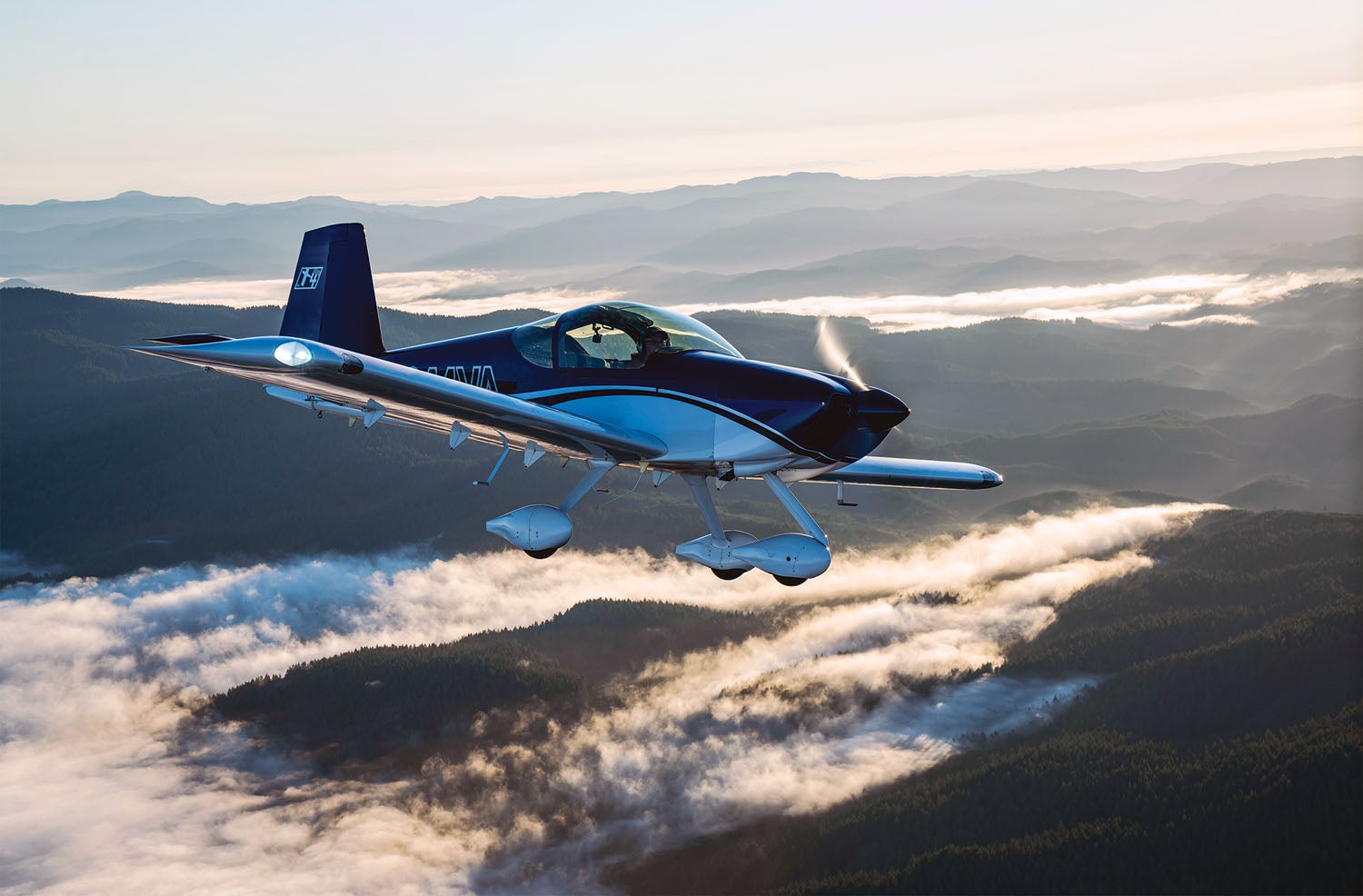 It’s said that power corrupts and absolute power corrupts absolutely. In the world of homebuilt aircraft, usually more power is better than less, but it’s also true that power without control is just heat and noise. (And there ends your monthly ration of overused aphorisms.) Power is speed and climb performance, but it can also be destabilizing and, past a certain point, starts making the machine worse—with higher fuel consumption comes the need to carry more fuel, which adds weight and puts demands on structure, in turn further increasing weight. All until you have a machine that’s taken so far beyond its design point that you might as well have started with a clean sheet.
It’s said that power corrupts and absolute power corrupts absolutely. In the world of homebuilt aircraft, usually more power is better than less, but it’s also true that power without control is just heat and noise. (And there ends your monthly ration of overused aphorisms.) Power is speed and climb performance, but it can also be destabilizing and, past a certain point, starts making the machine worse—with higher fuel consumption comes the need to carry more fuel, which adds weight and puts demands on structure, in turn further increasing weight. All until you have a machine that’s taken so far beyond its design point that you might as well have started with a clean sheet.
Most emphatically, this is not what this latest iteration of the Van’s RV-14A is all about. Instead, it’s an exemplar of what you can do by holistically developing incremental improvements by the engine manufacturer and applying a far more thorough R&D approach than “see if it’ll fit on the nose.” With this program, based on the Lycoming IO-390-EXP119, Van’s not only embraced a lighter, more powerful engine but gave it a more efficient home in both the RV-14 and RV-14A. (I’ll refer to the RV-14 generically, as there’s little difference between the trigear -14A and the straight RV-14.)
Engine Talk
Developed jointly by Van’s and Lycoming, this version of the IO-390 comes to the party rated at 215 hp, a nominal jump of 5 hp from the more common IO-390-A. This is the result of changing to a cold induction system; it’s separate from the oil sump in the -C but integral to it in the -A. In both iterations, the 390 has a forward-facing servo boss, and there are no carbureted versions available. A 5-hp increase from colder induction alone sounds plausible, but there’s more at work here. Lycoming has changed its methodology in the way it measures power, with the older engine falling into a “plus/minus” range of rated power, while the IO-390-C has to meet or exceed its rated power by a small amount. In the real world, the delta between a nominal IO-390-A and a -C could be, indeed is likely to be, more than 5 hp.
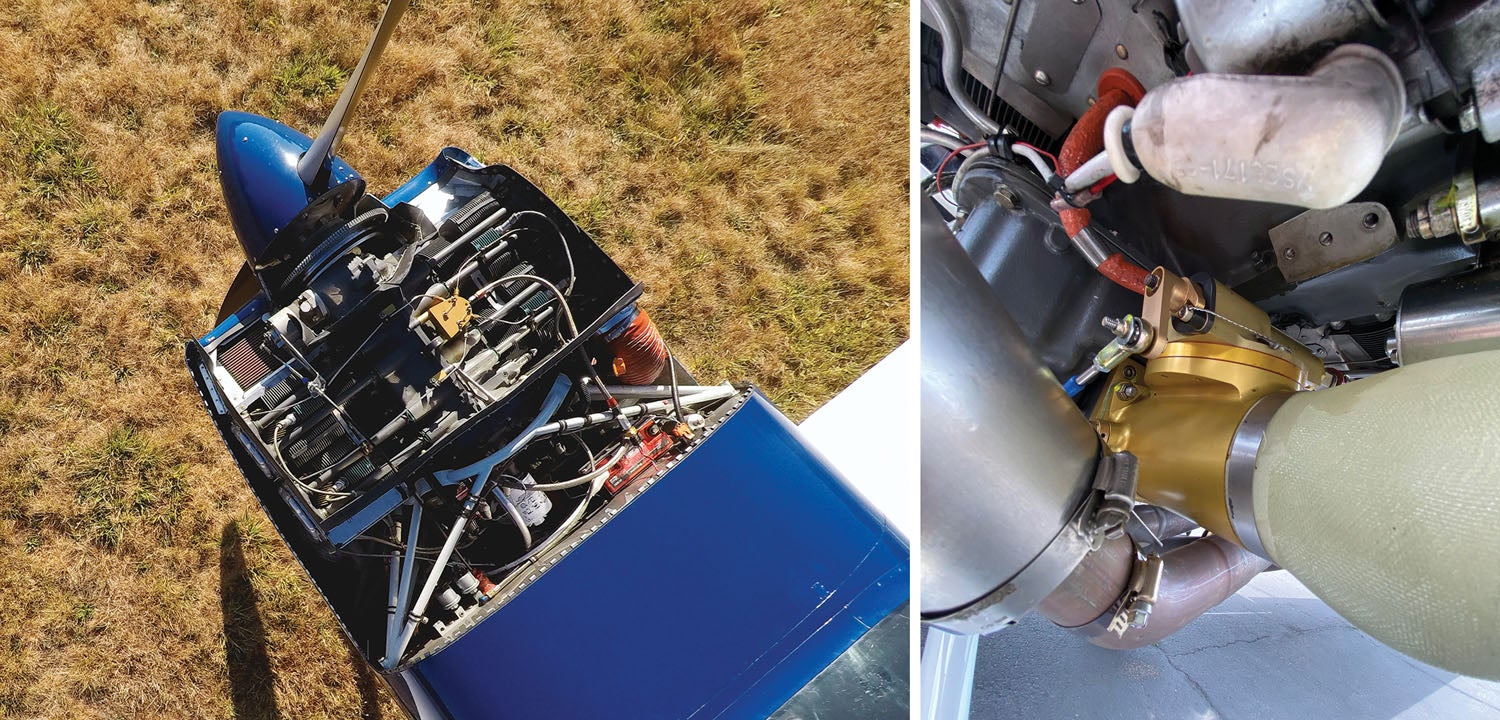
So that’s where Van’s starts on the uprated RV-14, but it didn’t stop there. Working with Airflow Performance, Van’s engineers spec’d a fuel servo sized for an IO-540 to ensure it would not create a flow restriction. (A reminder here that engines are air pumps, primarily; the more you can stuff through them, the more fuel you can add to that—and the more power you get. Easy peasy.) That servo is fed by a new induction system including a K&N air filter in the pilot’s side forward baffle, just inside the inlet. The duct was carefully modeled to preserve pressure recovery from the nose to the servo. Downstream is a new crossover exhaust system sized and shaped to preserve power. That it has a Mustang-esque bark is just a happy coincidence.
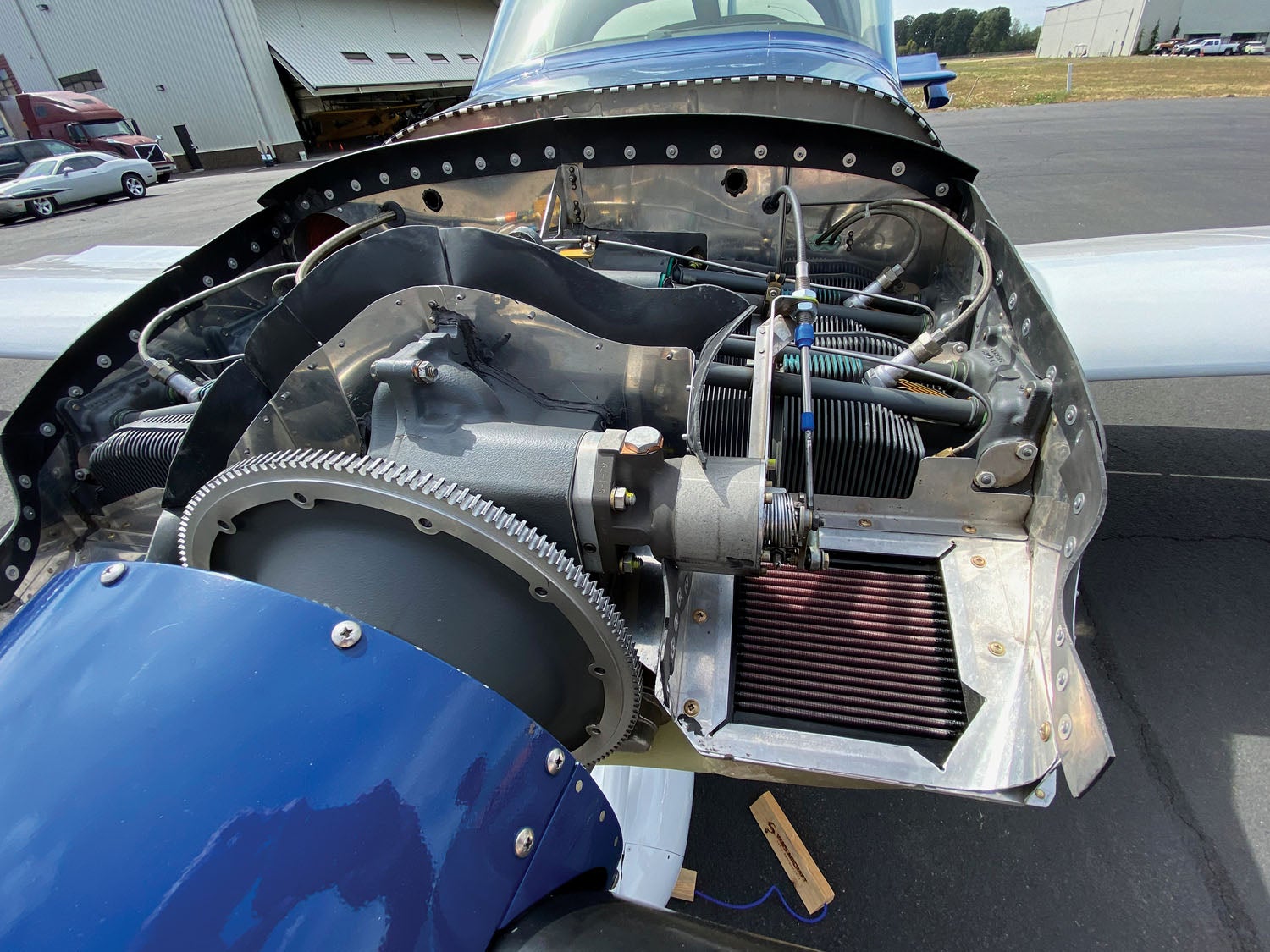
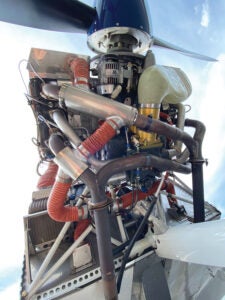
Just as power can corrupt, it liberates heat, and that’s an area Van’s attacked aggressively. The IO-390 is known to tax its oiling system through heat, as many early adopters can attest—getting cylinder head temps (CHTs) down was easy compared to cooling the oil. So Van’s has fed the RV-14A’s 13-row oil cooler with a 5-inch-diameter duct from behind the copilot-side rear cylinder. That’s an inch larger in diameter (increasing area from 12.6 to 19.6 square inches) and providing as much air as the cooler can consume. The ducting makes a mild S turn from the baffle plate to the horizontally mounted cooler, which then exhausts through the cowling gap above the right-side pipe.
To further improve cooling, the lower cowling is modified with two shapely fairings that follow the exhaust pipes’ contours and form the primary air exit for cruise flight. The previous version, with a four-into-one exhaust, used a central channel to clear the exhaust pipe and had a small fixed cowl flap just at the join line with the firewall. But in case more cooling air was needed, Van’s engineers closed off that central channel while also adapting a central-tunnel cowl flap that can add cooling capacity when needed; a lever in the cockpit does the deed. The overarching goal here was to increase power, keeping up with the installation’s cooling needs, while not just accepting a big drag increase along with it. Do that, and the airplane might climb better but it would not be usefully faster in cruise.
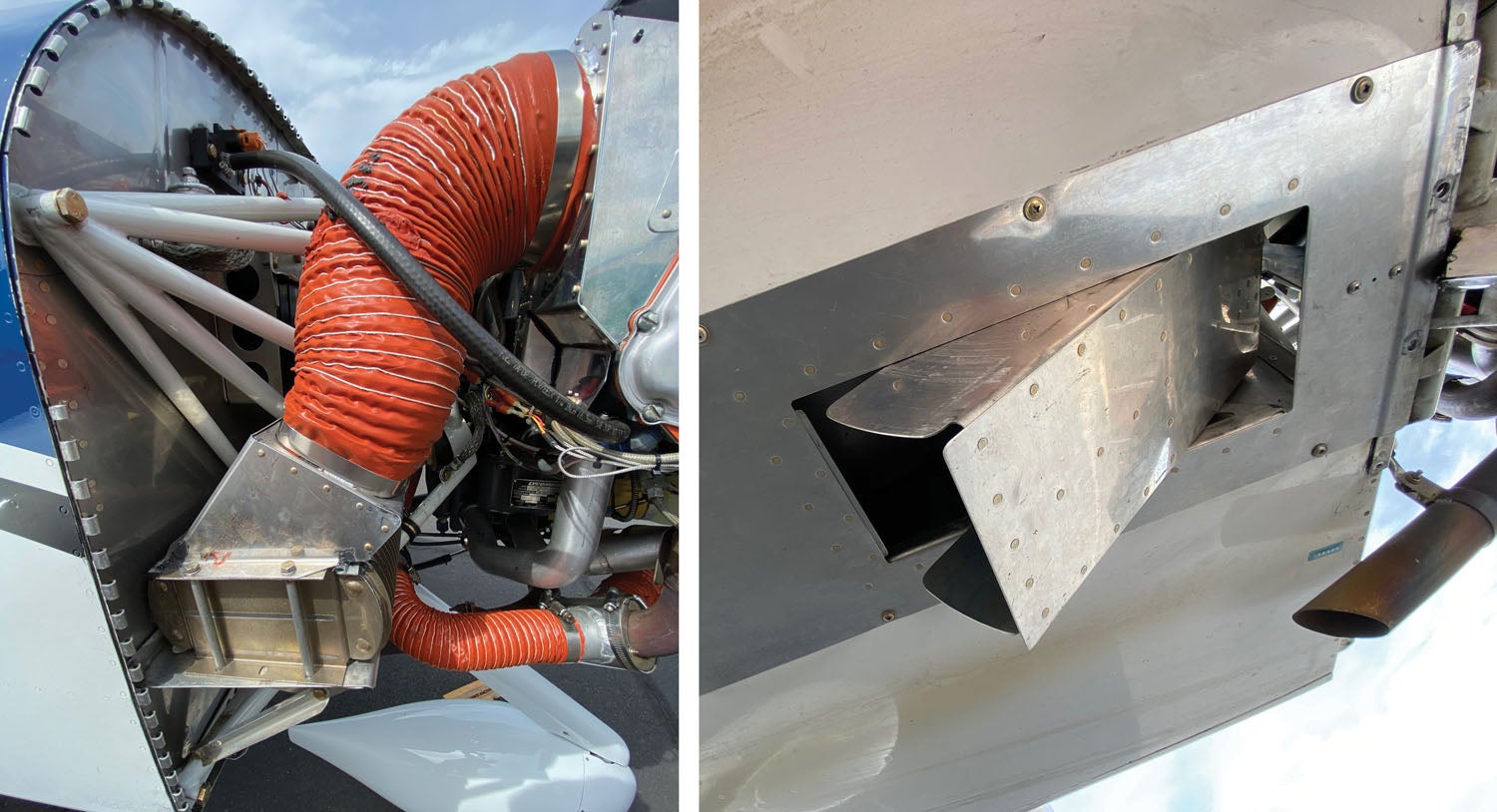
Even though the RV-14/14A is Van’s “big boned” two seater, weight is always a concern, so this IO-390 installation benefits from an interesting natural evolution of design. For starters, it has a magnesium accessory case and a billet-aluminum oil pump body, both weight savers. It also lacks certain accessory features—no vacuum pump drive, for example, which saves weight on the case itself as well as the elimination of the drive gear. (Some builders asked if they could spec a version with a vacuum-pump drive for a second alternator, and Van’s quickly made that available, though it comes with a weight penalty.) The EXP variant on the RV-14 also wears a lightweight starter and PlanePower alternator. And while the prototype RV-14A had been running with at least one P-Mag electronic ignition, it was being baselined with two Slick mags when I flew it.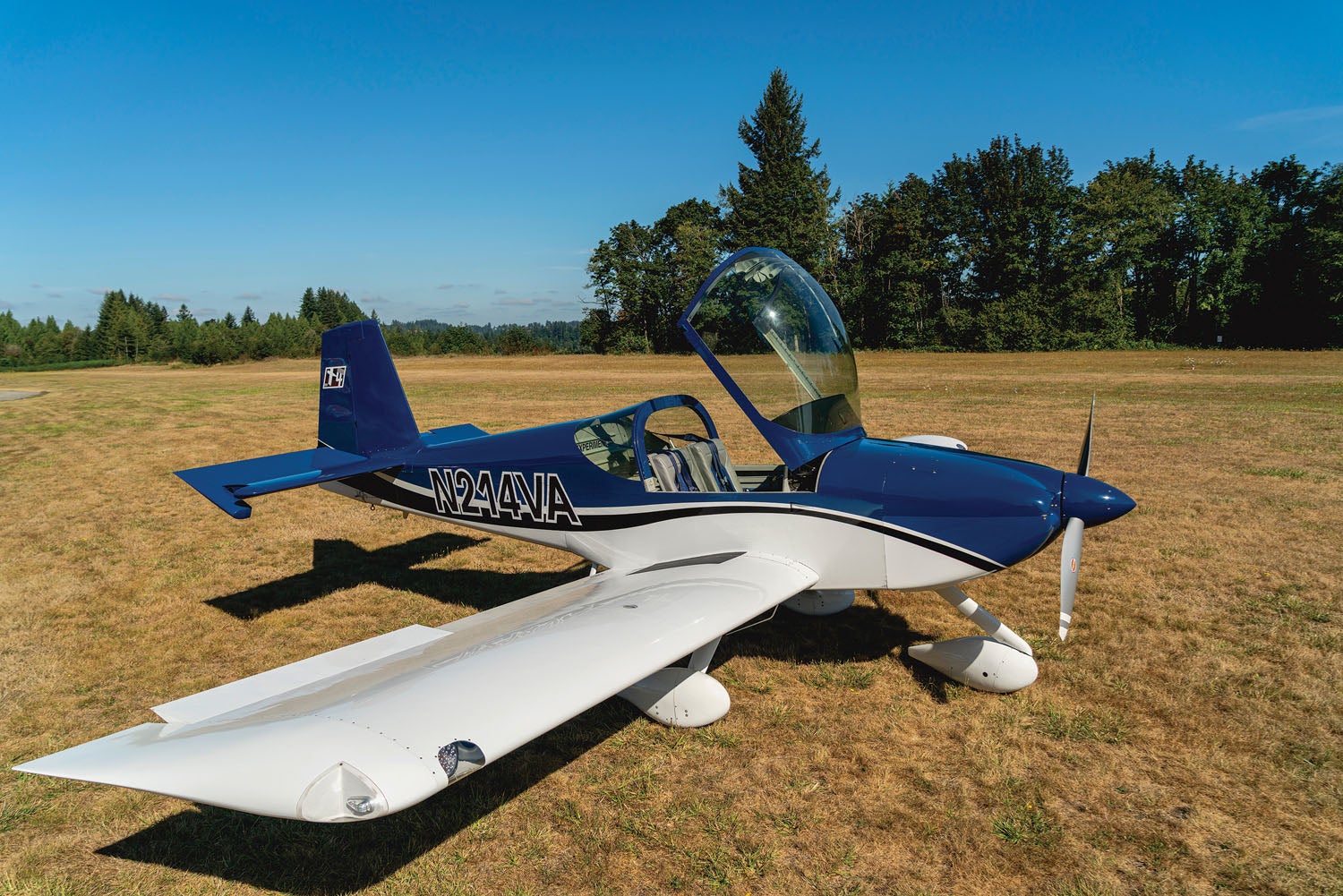
Power, Uncorrupted
What does this supposedly newfound power do for performance? Van’s has released its new performance specs for the EXP119-powered airplane that shows improvements across the board. Top speed rises from 203 to 216 mph (188 KTAS), while cruise (75% power, 8000 feet density altitude) goes from 193 to 203 mph (177 KTAS). Maximum rate of climb jumps from an already good 1500 fpm to 1680. Takeoff distances decrease as well: ground roll goes from 406 feet to 375, and the distance to clear a 50-foot obstacle decreases from 826 to 795 feet. Incidentally, these figures are at the RV-14A’s max gross weight of 2050 pounds. Curious to know if the changes made sense, I asked Dan Horton to put a fine pencil to them—see the “Speaking Truth to Power” sidebar below.
No better way to see if the numbers move the needle on the BS meter than flying, so Van’s marketing manager Greg Hughes and I spent two days flying and photographing N214VA—the RV-14A prototype now fitted with the EXP119 package—from the company’s base in Aurora, Oregon. Remarkably, this would be the first time I’ve flown an RV-14/14A. I have experience across the range so I get the whole “RV thing,” but my time away from this magazine just happened to coincide with the introduction and our flight tests of the 14/14A. Oh the fun I’ve missed!
My first impression probably mirrors that of most RV pilots: The RV-14A is big inside. With a wider cabin, taller canopy and lowered canopy rails, it has a lovely, spacious feel to the pilot space. Greg and I were not rubbing shoulders at all, and I was happy to see room outboard of my left hip for headset jacks, cell phone and other miscellany. Most other side-by-side RVs feel like everything must have a specific place, which is not a bad thing, but the 14 felt like I had room to roam. Where an RV-7 or -9 feels like you’re putting it on, you ease into the 14 like a well-worn pair of Levi 501s. It’s hard to overstate the difference.
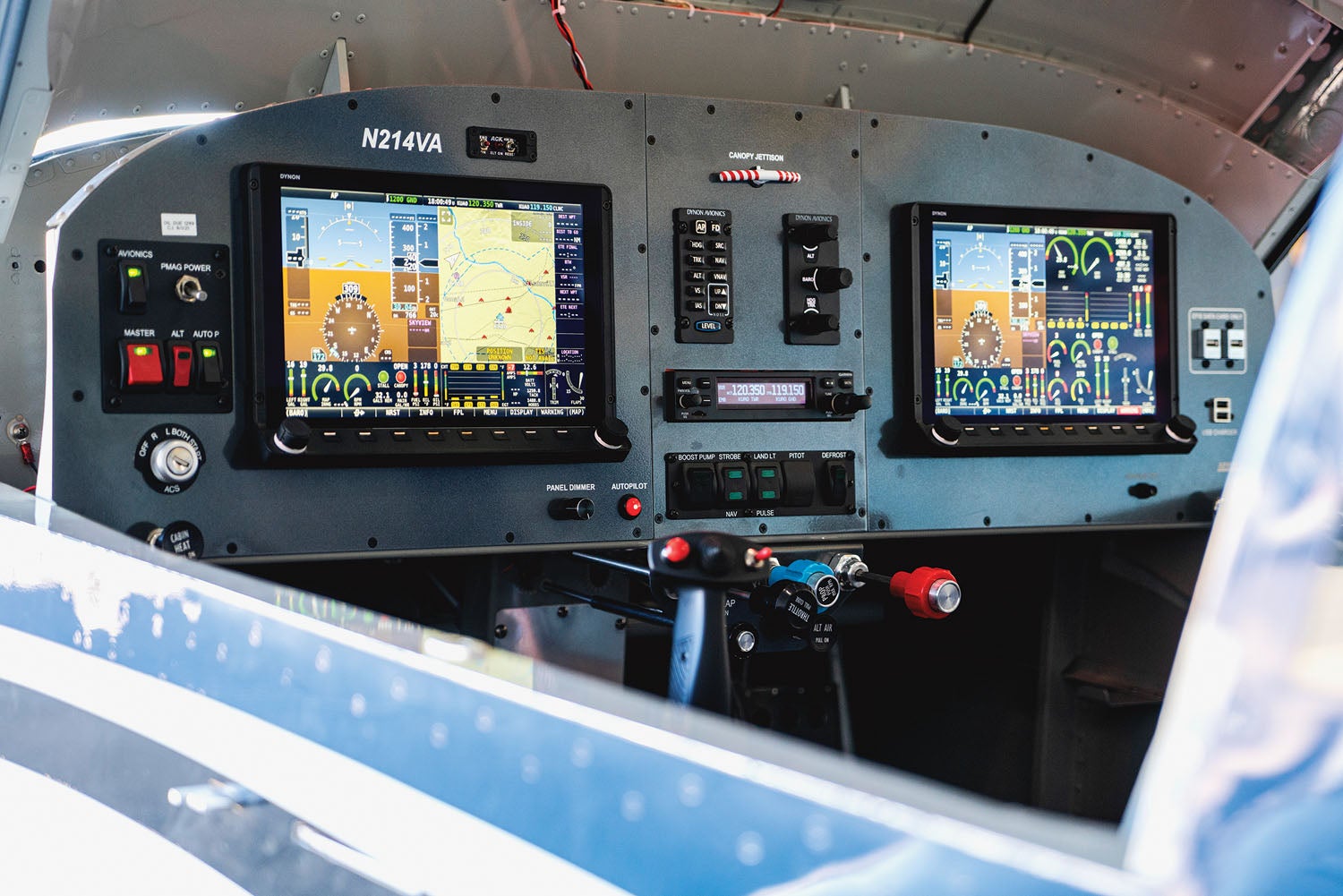
The checklist items are familiar to anyone with IO-390 time and comfortable in front of the Dynon SkyView HDX EFIS. (I counted for one of those two, at least.) Through that, we hit the runway. Greg recommends starting with full-back stick to lighten the nosewheel at the beginning of the run, which I did, then advanced the throttle. At the first part of the power application, the RV-14 squirts ahead, gaining speed predictably. But by the time the throttle is full in, the 72-inch Hartzell blended-airfoil prop has dug in, the engine takes on a much deeper, almost angry tone—and the airplane jets ahead. Balancing pitch and yaw here is not in the least difficult, since the control pressures are moderate and there’s apparently plenty of authority. (More on that later.) I let the airplane fly off as it passed 70 KIAS and struggled to keep pace with the pitch. The new 14 accelerates so hard and gains speed so fast that your mind is behind the process the whole way. I tend to fly unfamiliar airplanes with specific sight references, including putting the cowling right on the horizon. Do that in this airplane and you’ll blaze right through the 95 KIAS best-rate speed while it’s still gaining uphill traction. Holy cow.
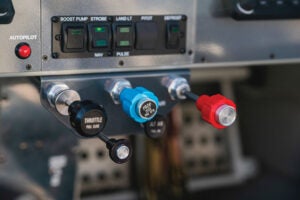
Understanding that Greg and I were carrying 42 gallons of gas (out of 50 max) and virtually no baggage, we were at about 1890 pounds, roughly halfway between max-gross (2050 pounds) and Van’s listed “solo weight” of 1705 pounds. Every subsequent takeoff, now comfortable with the sights and sounds, I was able to pitch to the 95-knot Vy comfortably and see the Dynon hang on 1800 fpm. A few takeoffs later, Greg urged me to aim for the best-angle speed of 75 KIAS. That takes some faith, since the windshield is filled with little more than cowling and sky, and the Dynon showed we were flirting with a 25° nose-up attitude.
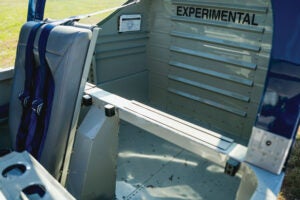
But here’s the important part: The RV-14 never felt uneasy with the horsepower. It got off the ground quickly, climbed really strongly and hung on the prop like some sort of metal gymnast—and never felt stressed doing it. After the first few minutes, I felt like I could predict what it was going to do and felt confident that it always had plenty of control authority to point it where I wanted it to go and keep the ball in the center. (When I wasn’t giggling like a teenager, of course.)
This sense of ease extends through slow flight and stalls—clean, the RV-14 bobbles and shudders, only breaking when provoked; with full flaps, a burble comes a fraction before a strong, straight-ahead break that responds immediately to relaxing the stick and adding a bit of power. I was immediately comfortable turning onto final approach at 75 KIAS. Visibility remains good, there’s plenty of energy to play with and the engine/prop combo offer instant drag to help you plop the airplane where you want it.
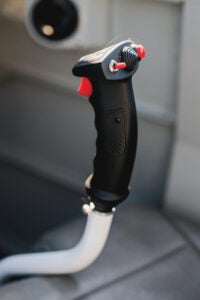
The Rest of the Envelope
Befitting its role as a more comfortable, long-distance cruiser—relative to the sportier RV-7/8 series—the RV-14’s handling is what you’d expect. Control forces are heavier in roll than you’d find on the typically light RV-7s and 8s, and even in the RV-9, which probably makes pitch feel a little lighter than it is. In fact, I had no trouble hitting and holding trimmed airspeeds, and felt that the -14’s responses in the low-level turbulence we encountered in the afternoon were quite good, not too “jiggly.” True, the RV-14 is not quite as imperturbably rock-solid as an RV-10, which has the same airfoil (but more wing area than the 14), but it was actually better than I figured it would be at our sub-2000-pound weight.
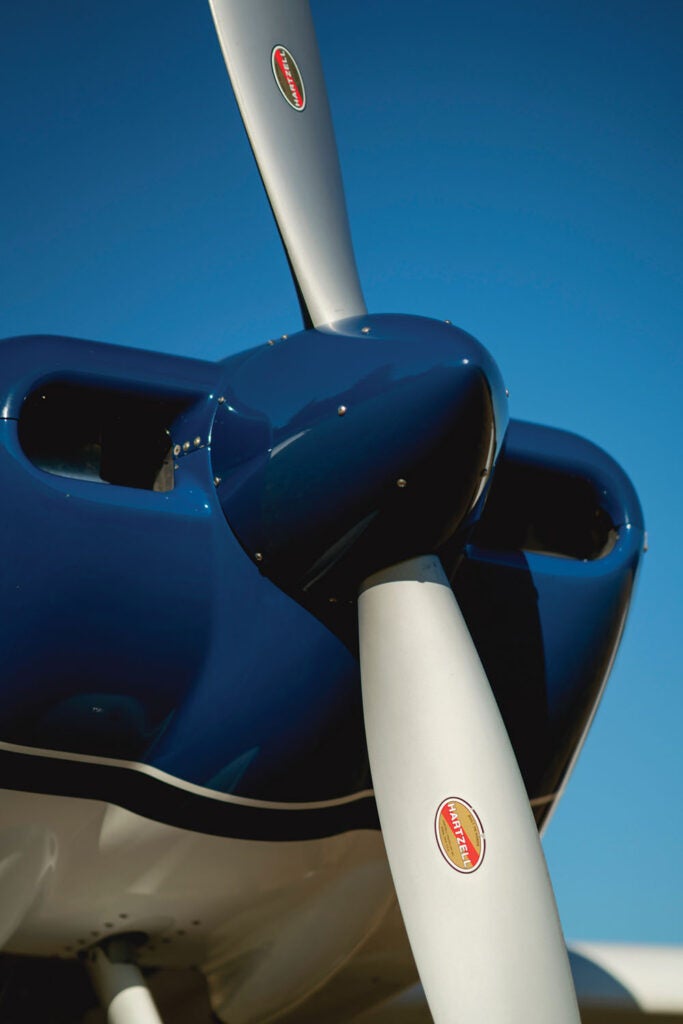
We ran a couple more speed trials that confirmed the cruise figures. At a density altitude of 8000 feet, running 24 inches of manifold pressure, 2400 rpm and burning 9.9 gph, we indicated 159 KIAS for 180 KTAS on the Dynon. The speed runs gave us a four-way average of 174 knots, a bit shy of the factory’s 75%-power claims, but we were actually running less power than that. A best-power setting on a 215-hp engine would be closer to 12.5-13 gph. Just as illuminating, though, are the lower-cruise numbers: Greg and I tried a long-range setting of 24/2300, leaned to 7.8 gph, while still doing 158 KTAS. Even accounting for the apparent instrument error, that’s strong performance, and at that fuel flow you could go almost 5.5 hours with an hour’s reserve. (A quick side note on the engine’s behavior. I was concerned that a throttle body sized for an IO-540 would run a bit raggedly on a smaller engine, like that old hot-rod you had with the too-big carburetor. Not a concern in reality; the IO-390-EXP119 was completely well mannered, even on a hot start.)
I mentioned at the top of the story what Van’s did to improve the RV-14’s cooling with the more powerful engine, and the efforts revealed real benefits in flight. At all times, CHT and oil temp were well controlled. Our cruise configuration listed above netted a high CHT of 363° and an oil temp of 196°. Testing the central cowl flap saw a drop in high CHT to 341° and oil temp to 188°. Since it wasn’t very hot—just 74° F on the ground for takeoff—we treated the cowl flaps as largely optional for takeoff and climb.
Bottom Line It, Then
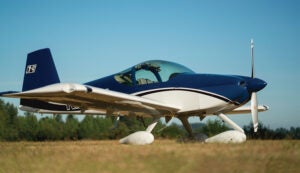 Van’s has gone to a lot of trouble to develop this FWF package for the RV-14/14A and it provides measurable benefits in performance. So what’s it going to cost? You’re starting an RV-14 at just over $36,000 for the airframe kit (or just shy of $50,000 for all quickbuild components). Bear in mind that this is a prepunched-to-final-size airframe, so no jigs and no need for up-drilling to the final rivet size, which saves a ton of time. The RV-14 also has a comprehensive list of by-the-book components like wiring harnesses and many, many items builders used to have to fabricate on their own.
Van’s has gone to a lot of trouble to develop this FWF package for the RV-14/14A and it provides measurable benefits in performance. So what’s it going to cost? You’re starting an RV-14 at just over $36,000 for the airframe kit (or just shy of $50,000 for all quickbuild components). Bear in mind that this is a prepunched-to-final-size airframe, so no jigs and no need for up-drilling to the final rivet size, which saves a ton of time. The RV-14 also has a comprehensive list of by-the-book components like wiring harnesses and many, many items builders used to have to fabricate on their own.
So, the engines: From Van’s, a basic IO-390 costs $34,500. The IO-390- EXP119 is $40,200. And while the final prices have not been set, it’s likely the FWF package for the EXP will be about $500 more than for the basic 390. Call it around $6200 more overall for that boost in performance, a figure almost lost in the noise of a project that’ll end up costing $100,000 or more once you’ve accounted for paint, interior and avionics.
It is, when you consider how well the RV-14A accepts the boost in power—flying well, keeping cool, actually operating more fuel efficiently in cruise—a classic no-brainer kind of decision.
Walk-around Video
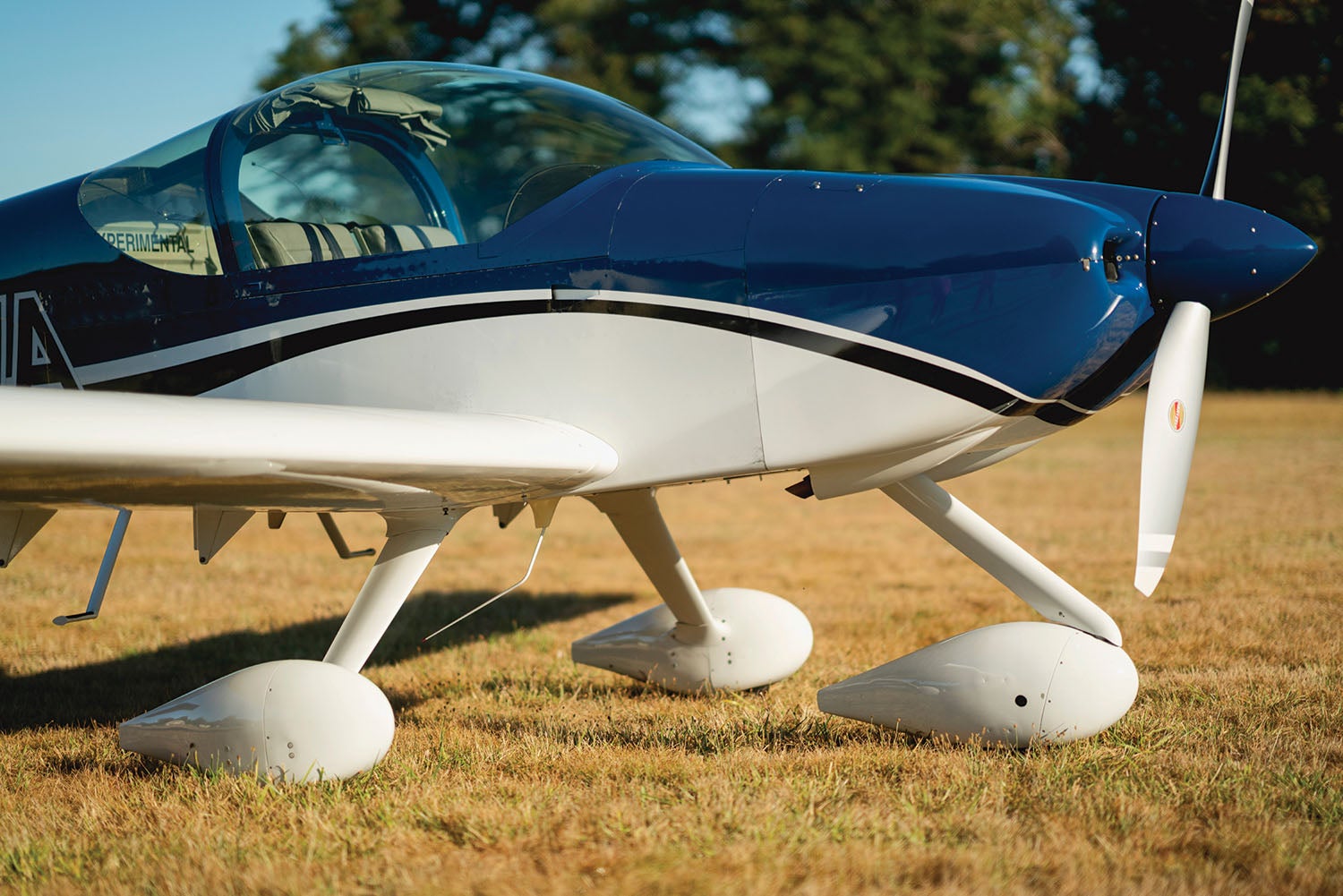

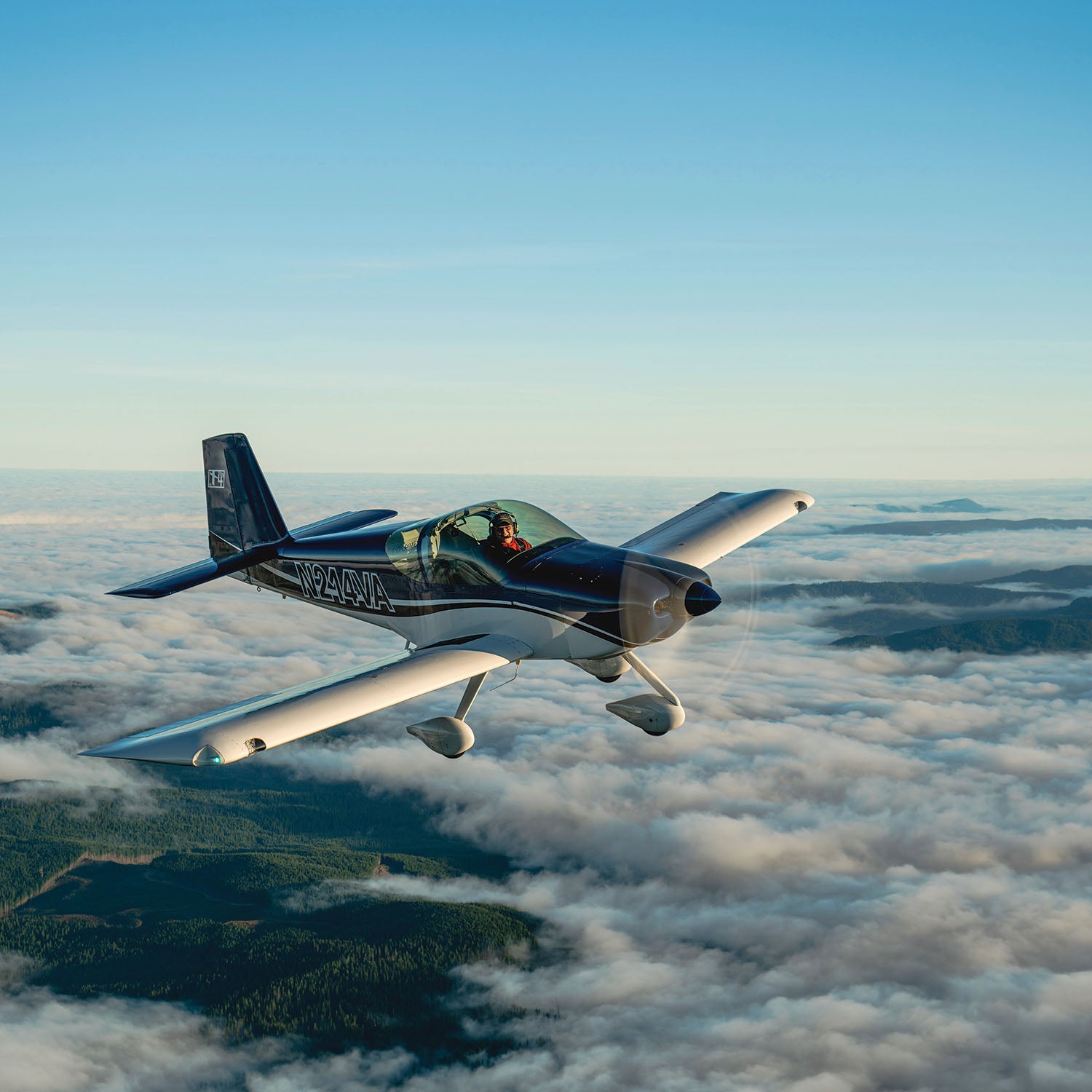













When is Van going to build an airplane we can put floats on?
Didn’t someone USA put floats on an 8 way back? I remember seeing pics. It was yellow….
Someone did a rv7 on floats for sometime…